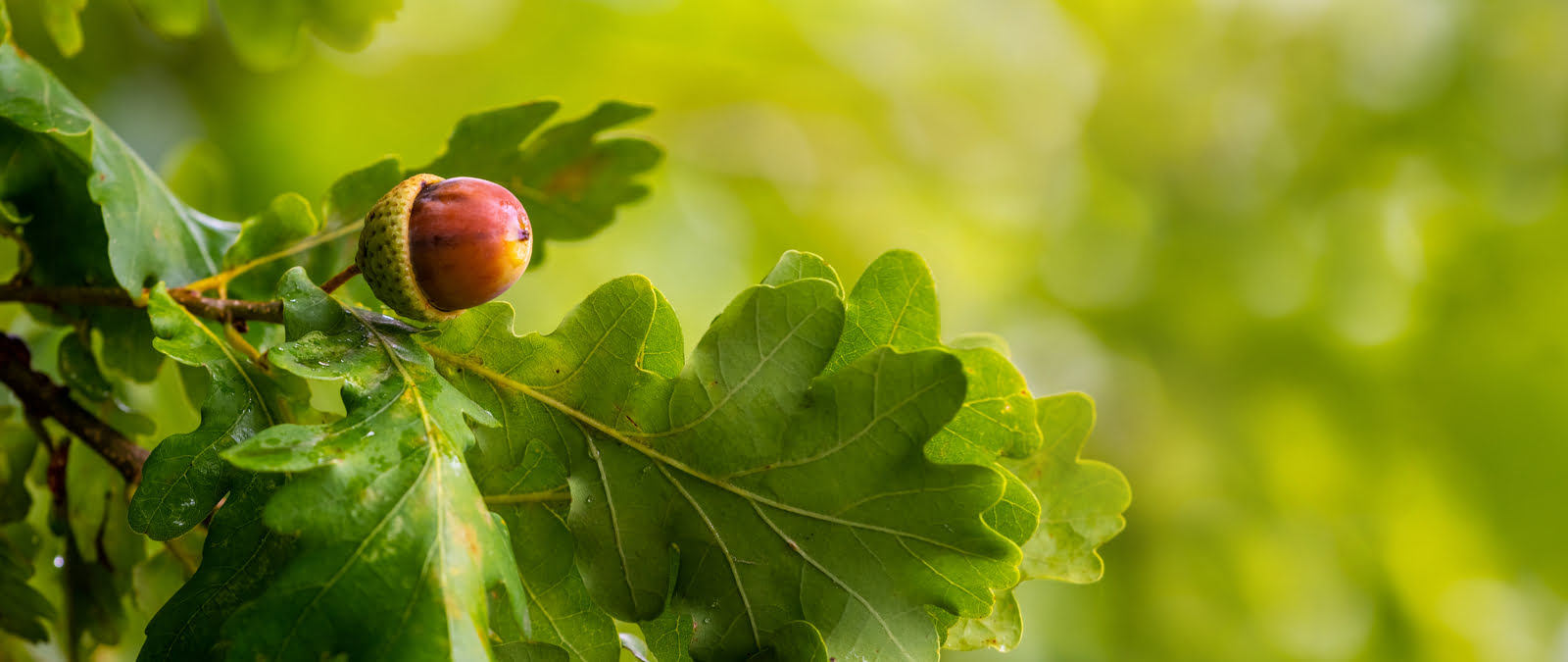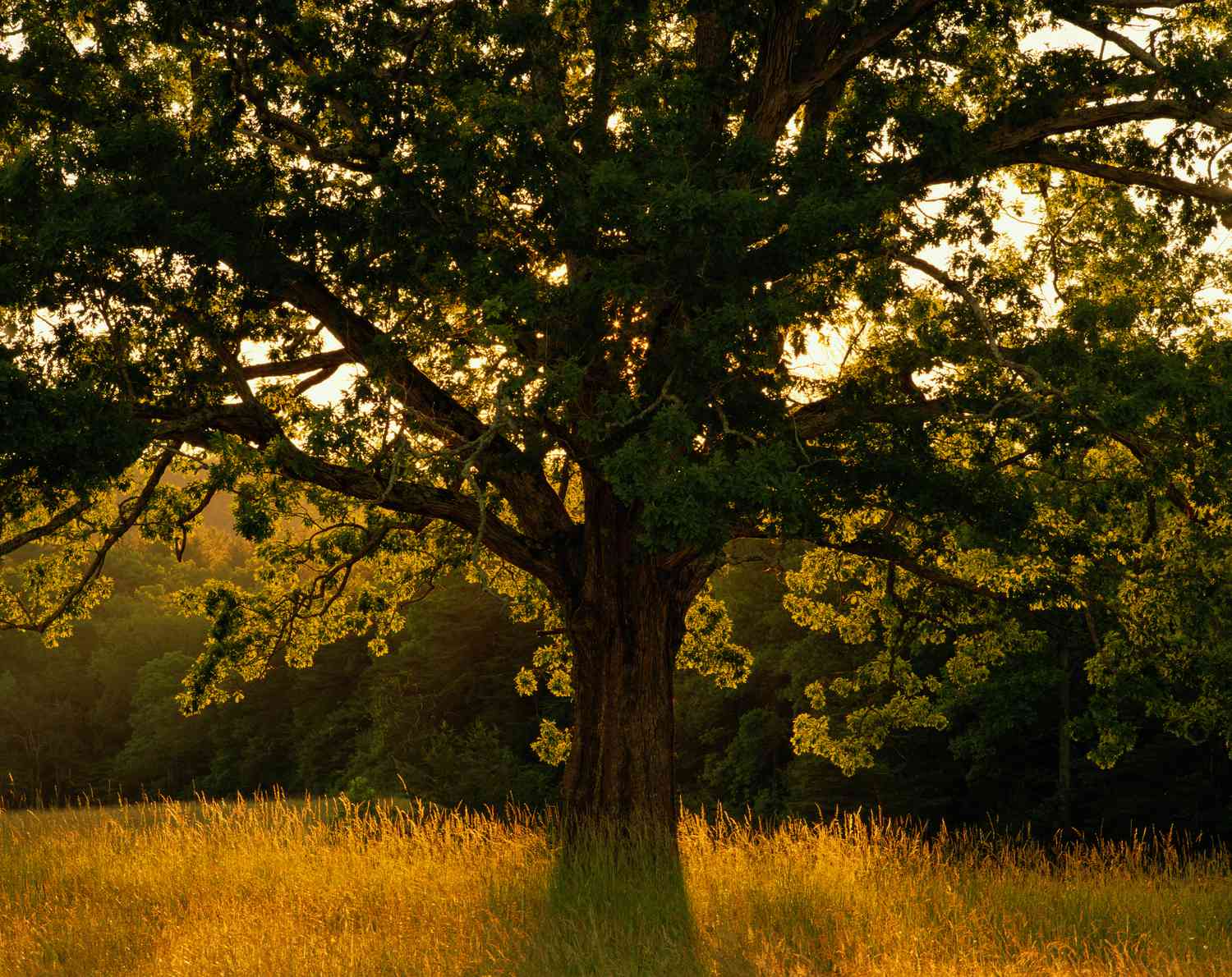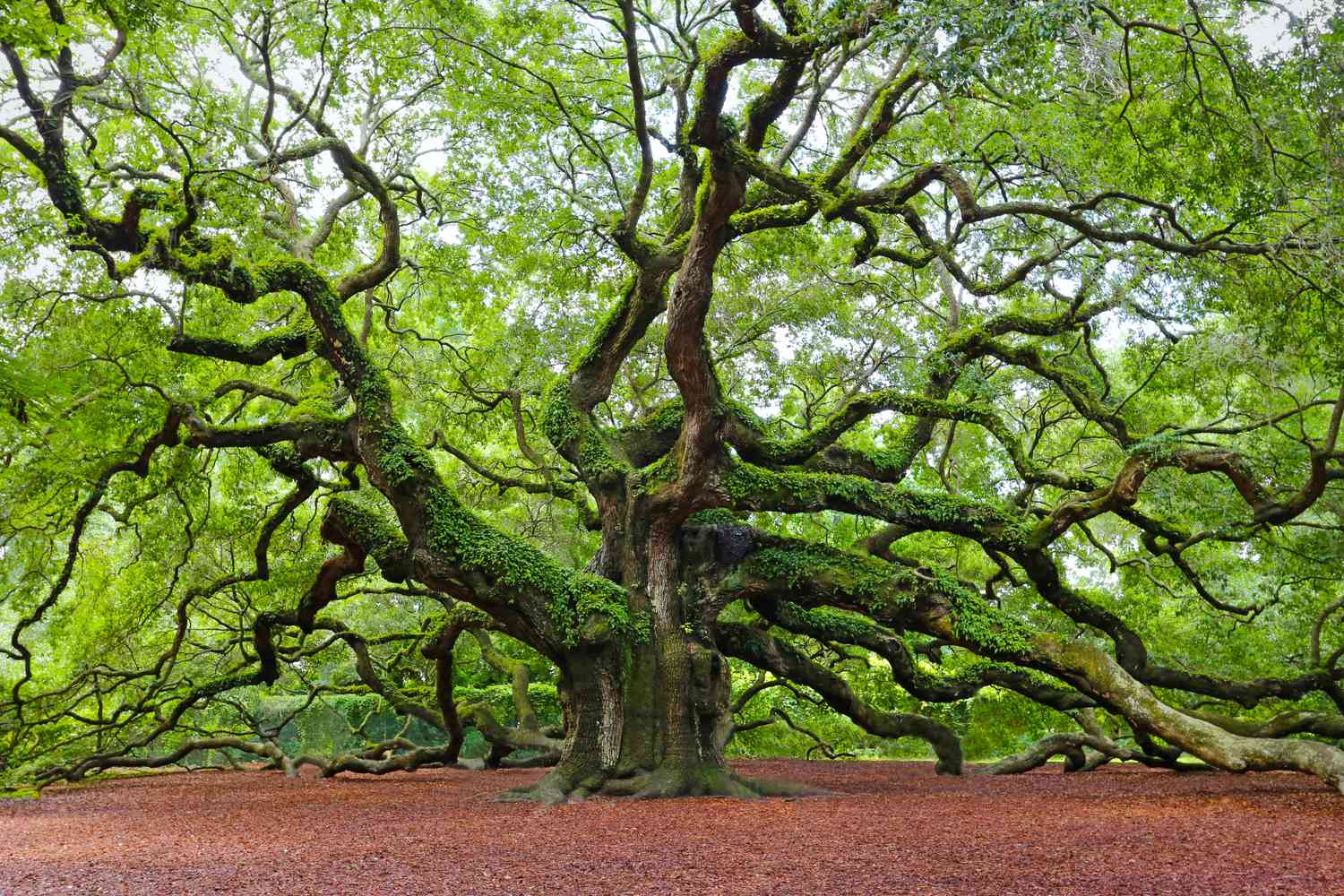Home>Gardening News and Trends>Latest News>How To Identify Oak Trees


Latest News
How To Identify Oak Trees
Modified: January 22, 2024
Discover the latest news and tips on how to identify oak trees. Learn about the characteristics and distinguishing features of different oak tree species.
(Many of the links in this article redirect to a specific reviewed product. Your purchase of these products through affiliate links helps to generate commission for Chicagolandgardening.com, at no extra cost. Learn more)
Table of Contents
Introduction
Welcome to the world of oak trees, majestic giants that have adorned forests and landscapes for centuries. With over 600 species scattered across the globe, identifying an oak tree can be a fascinating and rewarding endeavor. Whether you are a nature enthusiast, aspiring botanist, or simply curious about the trees around you, this article will guide you through the process of identifying oak trees.
Why focus on oak trees specifically? Well, oak trees are not just any ordinary trees. They hold a significant place in history, culture, and biology. From providing habitat and sustenance for countless organisms to being a symbol of strength and endurance in folklore and mythology, oaks have a deep-rooted connection with the natural world.
So, how can you differentiate oak trees from other tree species? By examining various characteristics such as leaf shape, bark texture, acorns, and overall tree form, you will be able to unlock the secrets of oak tree identification. It’s important to note that while this guide will provide a solid foundation, there may be some variation and exceptions within the oak tree family.
As you embark on this journey, keep in mind that tree identification can sometimes be challenging, requiring a keen eye for detail and a bit of patience. However, with practice and an understanding of key features, you’ll soon become skilled at recognizing oak trees in their natural habitat.
So, grab your field guide, put on your hiking boots, and join us as we delve into the fascinating world of oak tree identification.
Step 1: Understanding Oak Tree Characteristics
Before diving into the specifics of identifying oak trees, it is essential to familiarize yourself with their defining characteristics. Understanding these features will lay the foundation for accurate identification. Here are a few key characteristics to look out for:
- Deciduous Nature: Oak trees are deciduous, which means they shed their leaves annually. This sets them apart from evergreen trees that retain their foliage year-round. Keep in mind that some oak species, like the live oak, are semi-evergreen and may retain their leaves for longer periods.
- Alternate Leaf Arrangement: Oak trees have leaves arranged alternately along the branches. This means that the leaves emerge at different points along the branch rather than directly across from each other.
- Simple and Lobed Leaves: Oak leaves are generally simple and lobed, with distinct indentations or lobes along the edges. The number and depth of these lobes can vary between oak species, with some having smooth edges while others exhibit deeply serrated lobes.
- Prominent Midrib and Veins: Oak leaves typically have a central midrib running down the center and prominent veins branching out from it.
- Varied Leaf Shapes: While many oak leaves share a similar basic shape, there can be significant variation in their appearance. Some oak species have leaves that are narrow and elongated, while others have broader leaves with rounded lobes.
By becoming familiar with these characteristics, you will be better equipped to recognize and differentiate oak trees from other tree species. These features serve as a starting point for closer examination of specific oak tree traits, which we will explore in the following steps.
Step 2: Examining Leaf Features
One of the most defining characteristics of oak trees is their leaves. Examining the features of oak leaves is a crucial step in identifying these magnificent trees. Here’s what you should look for:
- Leaf Shape: Oak leaves come in various shapes, including oval, oblong, lanceolate, and elliptical. Some species have leaves that are deeply lobed, while others have leaves that are almost unlobed.
- Lobes and Sinuses: Pay attention to the number and depth of lobes along the leaf edges. Oak leaves can have anywhere from shallow to deep lobes, with sinus-like spaces between each lobe.
- Leaf Margins: Take note of the leaf margins, which can be smooth, serrated, or toothed. The edges can vary greatly between different oak species, so observe the level of serration or toothiness for further identification.
- Leaf Color: While most oak leaves are green, their color can vary, especially during different seasons. In some species, leaves may turn vibrant shades of red, orange, or brown in the autumn months.
Take the time to closely observe and compare the leaves of different oak tree species. It’s helpful to collect a few fallen leaves from different trees to compare their features. Additionally, refer to field guides or online resources for visual aids that can aid in identification.
When examining oak leaves, it’s important to remember that leaf appearance can vary depending on the age of the tree and environmental factors. Younger trees may have leaves that look slightly different from mature trees, and the same species growing in different regions might exhibit slight variations in leaf characteristics.
By closely examining the leaf features and noting their distinct qualities, you will gain valuable insights into the specific oak tree species you encounter.
Step 3: Analyzing Bark Texture and Color
The bark of oak trees can provide valuable clues for identification. While bark appearance can vary between species, analyzing the texture and color of the bark can help narrow down your search. Here’s what to look for:
- Texture: Oak bark texture ranges from smooth to rough, depending on the species. Some oaks have smooth bark when young, but develop rough and fissured bark as they mature. Pay attention to the overall texture, including the presence of deep furrows, ridges, or peeling bark.
- Color: Oak bark can have a range of colors, including gray, brown, black, or even reddish hues. However, keep in mind that the color can change over time as the tree ages or with exposure to environmental factors. Focus on the predominant color and any unique patterns or variations.
- Presence of Lichens or Moss: Look for the presence of lichens or moss on the bark. While not exclusive to oak trees, certain species of lichens or moss tend to favor oak bark. These organisms can add additional visual interest and help with identification.
When analyzing the bark, it’s important to examine multiple parts of the tree, including the trunk, branches, and twigs. Different oak species may exhibit slightly different bark characteristics on various parts of the tree.
Keep in mind that bark texture and color may change as the tree ages or due to environmental factors. Young oak trees tend to have smoother and lighter-colored bark, while older trees may have rougher and darker bark. Additionally, the bark of some oak species may exfoliate or peel off in distinct patterns.
By carefully observing these bark traits and noting any unique features, you’ll be one step closer to identifying the oak tree species you are encountering.
Step 4: Observing Acorns and Flowers
Acorns, the fruit of oak trees, and flowers play a significant role in identifying specific oak tree species. While not all oak species produce acorns or have noticeable flowers, observing these reproductive structures can provide valuable insights. Here’s what to look for:
- Acorns: Acorns are one of the most distinctive features of oak trees and can vary in size, shape, and color depending on the species. Pay attention to the size of the acorns, the presence of caps or cups, and any unique patterns or markings on the acorn shells. Note that it can take several years for an oak tree to produce its first crop of acorns, so not all trees may have them.
- Flowers: While oak tree flowers may not be as visually striking as those of some other tree species, they can still provide important identification clues. Oak flowers are small and typically appear in clusters called catkins. These catkins may vary in color, ranging from greenish-yellow to reddish-brown. Take note of the timing and location of flower production, as this can also aid in identification.
It’s important to remember that acorn production and flower appearance can be influenced by factors such as tree age, environmental conditions, and the specific oak species. Some oak trees may produce acorns annually, while others may have irregular or intermittent acorn crops.
When observing acorns and flowers, be sure to consider the entire tree rather than relying solely on fallen acorns or detached flowers. Examining these structures directly on the tree can provide more accurate identification.
By closely inspecting acorns and flowers and comparing them to available reference materials or online resources, you’ll enhance your ability to identify oak tree species more effectively.
Step 5: Considering Tree Shape and Size
Examining the overall shape and size of an oak tree is another important aspect of identification. Different oak species have distinct growth habits and can vary in their overall appearance. Here’s what to consider when assessing tree shape and size:
- Habit and Growth Form: Oak trees can have various growth forms, including upright, spreading, or weeping. Some species have a more symmetrical or pyramid-shaped crown, while others may have a more irregular or open canopy. Pay attention to the overall shape and silhouette of the tree.
- Height and Spread: Oak trees can range in size from small shrubs to towering giants. Consider the height and spread of the tree to help determine its species. However, keep in mind that environmental conditions, such as available space and competition, can influence a tree’s size.
- Branching Pattern: Observe the branching pattern of the oak tree. Some species have a more horizontal branching habit, while others may have more upright or irregular branches. Take note of any unique patterns or angles in the branching structure.
It’s important to note that tree shape and size can be influenced by factors such as age, site conditions, and pruning practices. Younger oak trees may have a different shape than mature trees, as the crown develops and the tree reaches its full potential.
When considering tree shape and size, it can be helpful to observe multiple trees of the same species in order to identify common characteristics. Pay attention to the overall impression that the tree gives and compare it to reference materials or online resources for further confirmation.
By considering the tree’s shape, size, and branching pattern, you’ll gain valuable insights that contribute to successful oak tree identification.
Step 6: Identifying Oak Tree Species
After carefully examining various characteristics such as leaves, bark, acorns, flowers, tree shape, and size, you are now ready to identify the specific oak tree species. Here are some additional tips to aid you in the identification process:
- Field Guides and Online Resources: Consult reliable field guides or reputable online resources that provide detailed information and images of different oak tree species. These resources often include identification keys, range maps, and additional distinguishing features to help narrow down the possibilities.
- Local Knowledge and Experts: Reach out to local arborists, botanists, or naturalists who have expertise in tree identification. They may be able to provide valuable insights specific to your area or region, where certain oak species may be more common.
- Consider the Location: Oak tree species vary in their geographical distribution and habitat preferences. Take into account the location and surroundings where the tree is found. Certain species may be more prevalent in forests, while others thrive in open grasslands or wetland environments.
- Study Leaf and Bark Patterns: Pay attention to specific leaf and bark patterns that are unique to certain oak species. Some oaks have distinctive markings, spots, or serrations that can aid in identification.
- Consult Local Arboretums or Botanical Gardens: Visit local arboretums or botanical gardens that feature collections of native oak trees. These institutions may have information boards or knowledgeable staff who can assist you in identifying different oak species.
Remember that oak trees exhibit a wide variety of characteristics, and no single aspect can definitively identify a species. It is often a combination of multiple features that leads to accurate identification.
Finally, don’t be discouraged if you can’t identify an oak tree species immediately. Tree identification can sometimes be challenging, and it may require further investigation and consultation with experts. With continued observation and a growing understanding of oak tree characteristics, you will gradually enhance your identification skills.
So, go out and explore the beauty of oak trees, armed with your newfound knowledge, and enjoy the rewarding experience of identifying these magnificent giants.
Conclusion
Identifying oak trees can be a captivating and fulfilling endeavor, allowing you to connect with nature and deepen your understanding of these remarkable species. By familiarizing yourself with their characteristics, including leaf features, bark texture and color, acorns and flowers, tree shape and size, and consulting various resources, you can confidently identify different oak tree species.
Throughout this journey, remember that oak trees exhibit natural variations within each species, so it’s important to consider multiple traits and consult reliable references for accurate identification. Continual observation and learning from local experts and resources will further enhance your skills in oak tree identification.
As you embark on your quest to identify oak trees, take the time to appreciate their ecological importance, cultural significance, and timeless beauty. Oak trees have provided food, shelter, and inspiration for countless generations, and understanding and protecting them ensures their conservation for future generations.
So, put on your hiking boots, arm yourself with knowledge, and explore the fascinating world of oak trees. Whether you’re strolling through a lush forest or admiring an urban park, the towering presence and intricate features of oak trees are waiting to be discovered and appreciated.
Embrace the wonder of the natural world and enjoy the journey of identification as you unravel the secrets of these majestic oak trees.








